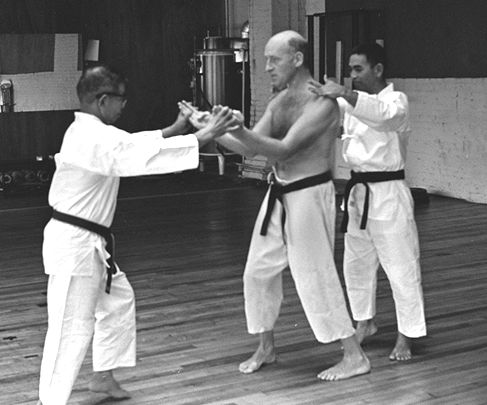Towards a Dynamic Sanchin Stance

While the 50/50 static stance provides an effective platform for the torso, it cannot be used to generate power. With a stabilizing leg/ driving leg stance, the balance of weight is not far off from being equally weighted on both legs. It may be as slight as 51/49 (front to back) or as great as 60/40 depending on the function of the arms. The reason is that the back leg is pushing forward and the front leg is stabilizing that push. If the back leg’s function is to stabilize, it’s ability to generate power is commensurately reduced (as in a kick off the forward foot). But the weight shift through the stance should never go past the front foot’s ability to stabilize unless the forward foot advances in a sliding step. Actually it’s the driving force of the rear foot that would generate and support the sliding step -much like “popping a wheely”. Furthermore, the weight on the forward foot should never cause the knee to bend further than vertical alignment with the toes.
Essentially, punching over the forward foot produces the same mechanics and feeling except that there is usually a greater rotation in the supporting hip as the direction of rotation is more free as it moves towards the rear foot (instead of against the toed in position of the forward foot).


